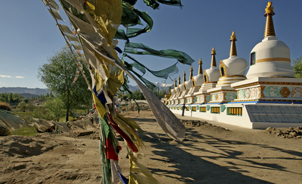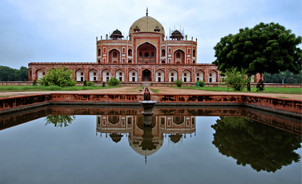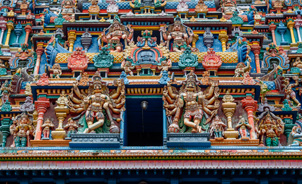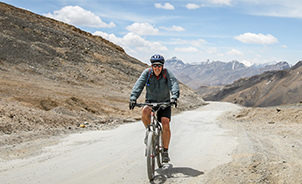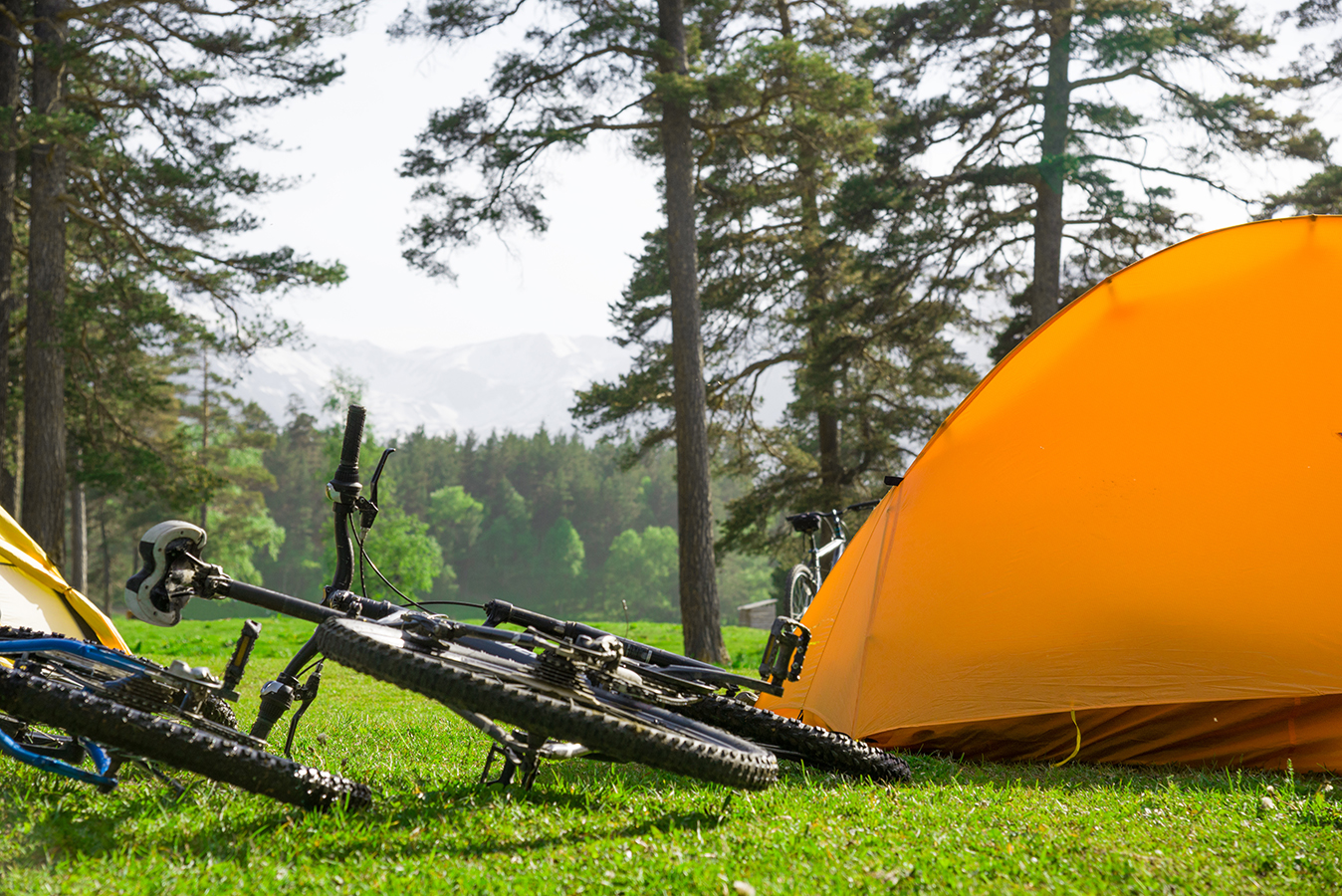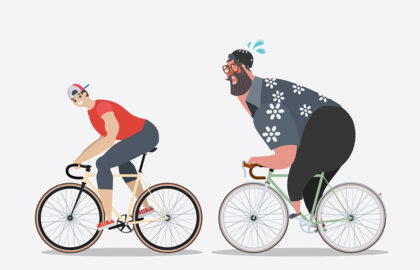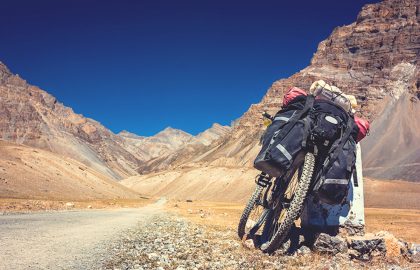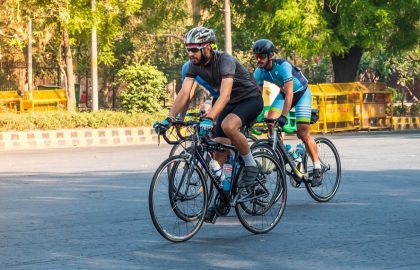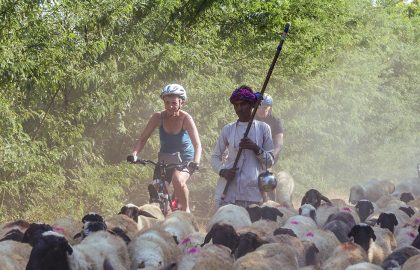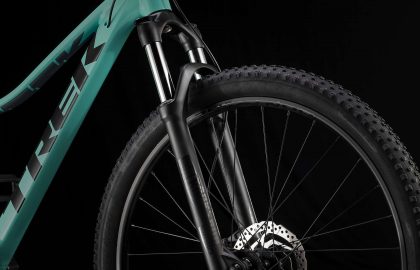Part 1: Choosing a Bicycle For Touring in India
There are countless things to consider when purchasing a new bicycle. Buying a new bicycle isn’t as easy a task as it’s made out to be. The most common mistake people make when buying a new bicycle is not leaving enough room for a budget to add on new accessories. Granted that buying a new bike gives a very satisfying and refreshing feeling, but buying some accessories and gear to go along with it will surely make it a memorable experience.
Touring for long distances requires a bicycle with many characteristics and features. Fortunately, here’s a guide to help you purchase a bicycle, the gear and apparel for a tour for cycling in India.
- Bicycle Type
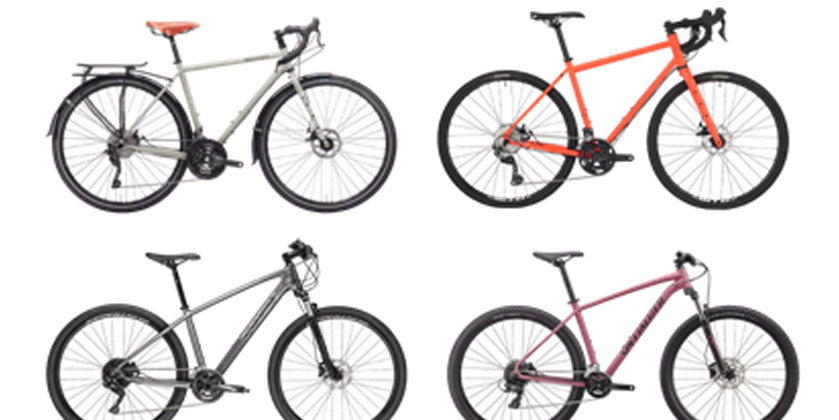
Starting off with the most important tool for your expedition or tour is the right bicycle type for you. Obviously, you’ll need a touring bike. These bikes are designed to be ridden long distances, are durable and can carry a lot of weight. An ideal touring bike is generally not lightweight and is designed for comfort and stability rather than for speed and aerodynamics.
A touring bike can either have drop bars or flat handlebars which depends on the rider’s choice.
Handlebars
Other than looking really cool, touring bikes with drop bars offer more hand positions for those long days on saddle – it’s the hoods for flats and climbs, the tops for cruising speeds and the drops for the winds or climbs. Drop bars on touring bikes offer a more aerodynamic advantage in rough headwind conditions. While touring, climbing a steep road comes ever so often and drop bars offer that advantage of pushing your weight as far forward as possible in order to pedal efficiently.
Although flat bars offer neither an aerodynamic advantage nor multiple hand positions, what they do offer is better control, improved stability on rough roads or weather conditions and enough space to mount a handlebar bag or other gear or accessories. While allowing only one hand position for the rider, the brakes are easily accessible in situations of emergency braking.
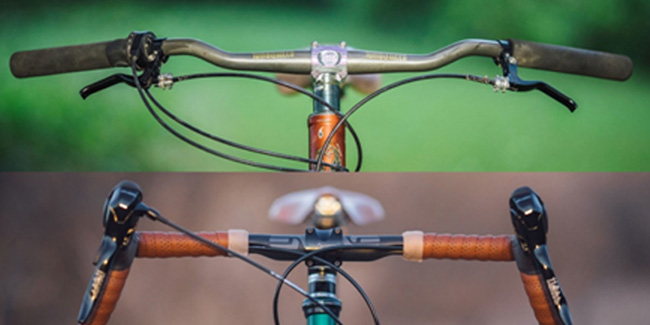
Frames
The bicycle frame is considered as the soul of the bicycle. Different frame materials offer different characteristics to a touring bicycle. Steel frames offer brilliant durability and smooth ride quality due to steel’s excellent yield strength. Aluminium frames are lighter than their steel counterparts, offer greater stability and are almost rust proof. Although carbon and titanium frames are expensive, they are lightweight by nature and design, and offer great strength to weight ratio for any type of cycling discipline. Quite often, steel and aluminium frames are preferred choices of bike tourers, carbon and titanium frames are showing signs of growing emergence amongst a lot of endurance and touring cyclists.

Saddles
There are infinite saddles available and depend not only on the cyclist’s personal choice and their body morphology. Choosing a saddle and finding the right fit is a complicated process which only a proficient bike shop can help with. By determining your ideal riding position, usually guided by computerised devices that can measure the width of your sit bones, will help you eventually find the right saddle fit for your cycle tour. For cycling in India, and its terrain and roads, the right saddle will help you cover those tricky conditions with ease.

Fork and Suspension
To have a more comfortable cycle tour, a common preference for any cyclist is to have a cycle with a front suspension. Front suspensions are there to absorb any shocks caused by irregular terrain like potholes and bumps. Although having suspensions are more of a rider’s personal choice, a lock-out suspension provides a better riding experience on any type of terrain. Most touring bikes with drop bars don’t come with lock-out suspensions but do offer aluminum frames that have a varied degree of shock absorption. Although the only disadvantage of having a suspension is because it adds another potential point of failure and severely limits the number of front racks that can be used.
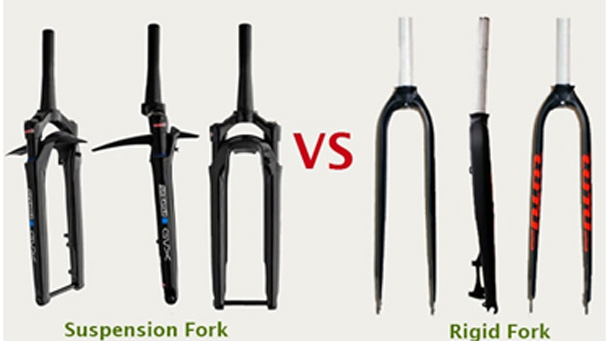
Gearing/Drivetrain
For cycle tours, supported or unsupported, it is important to have a gear ratio that will not only help spin up the hills but also help you cruise at speed when you have a tailwind on your back. Choosing the right gear ratio will also enable efficient cadence when cycling on rough terrain. Many bikes come with varied gear ratios for racing, touring and mountain biking, it is essential to understand that the easiest gear will help you climb those steep hills without much effort. So, choose a bike with the most number of gears at the back, ideally anything above 10 speeds.
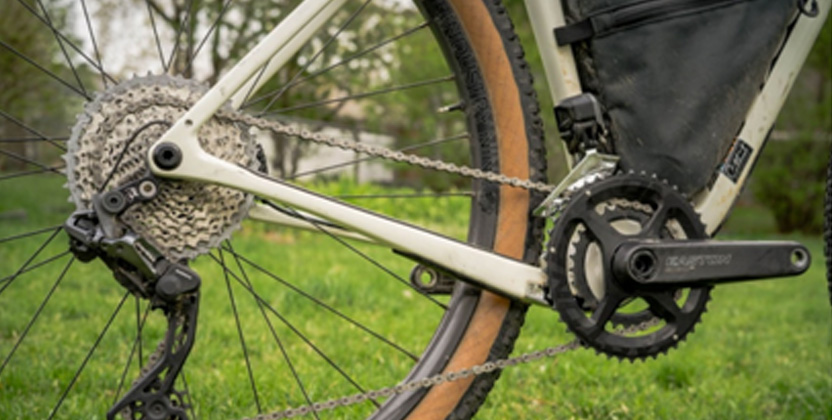
- Bike Fit
A bike fit is a process of adjusting a bike for the cyclist to optimise their comfort, performance and efficiency or simply put – closely match the anatomy of the bike with the rider’s morphology and vice versa. For cycle touring, it is of paramount importance that cyclists get a bike fit done to ensure comfort and stability. The most essential purpose of a bike fit is to prevent any injuries and allow the muscles to perform at their best ability. By adjusting and analysing foot position, saddle height, stem length and handlebar position, a cyclist (touring) will be able to maximise enjoyment and performance for any endurance ride.
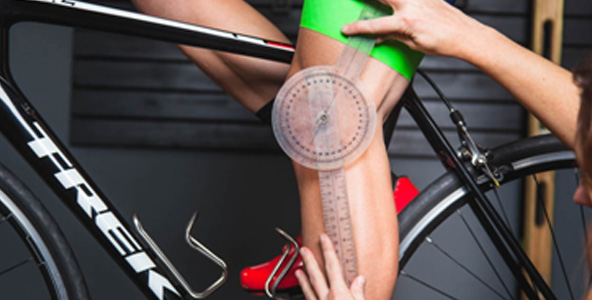
Often, one of the most important steps skipped when purchasing a new bike, even a basic bike fit, provides the cyclist with more technical know-how of his/her fit and comfort degree with the bicycle. A professional bike fit can be done at a bike shop which has the most basic equipment like an indoor trainer and a measuring scale. For touring cyclists, a professional bike fit is very important due to the amount of time spent on the saddle. Since it’s not only about the bike fit as a whole, but also down to minute details of saddle adjustment accuracy, distance from the saddle to the handlebars and back posture angle.
- Gear and bags
Cycling bags are inherently designed to be waterproof. Organising and carrying the right amount of gear and bags and ensuring the correct weight distribution will enable the rider to be more comfortable and efficient in riding and not have any issues of swaying and shifts in centre of gravity. A bikepacking rig typically consists of a pair of pannier bags, a frame bag, a handlebar bag, a seat pack or saddle bag and several smaller peripheral bags that live on the frame, handlebars and forks, helping to spread weight across the bike.
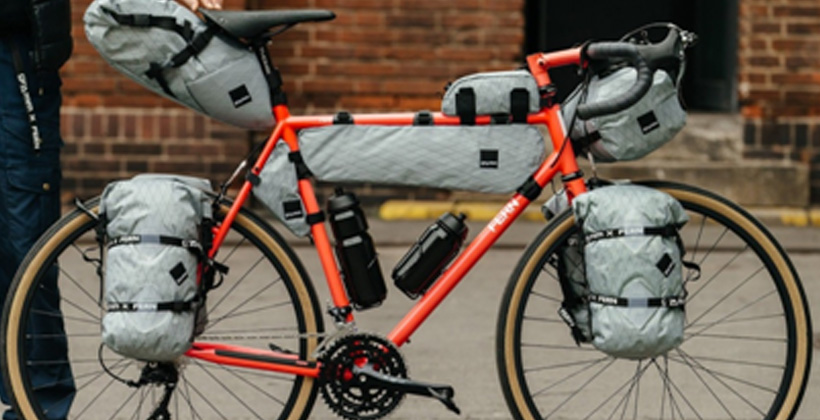
Frame Bag
A frame bag is designed to carry equipment and is installed within the frame of the bicycle. It is usually fastened by a couple of velcro or buckle straps in 3 locations: the head tube, the top tube and the seat tube. Several frame bags are custom made to fit snugly on different sized unique frames. Heavier items are typically stored in the frame bag to maintain a low centre of gravity to ensure stability and control. For long tours, it is recommended to pack those spare parts and tools that you would need to fix any mechanical issues.
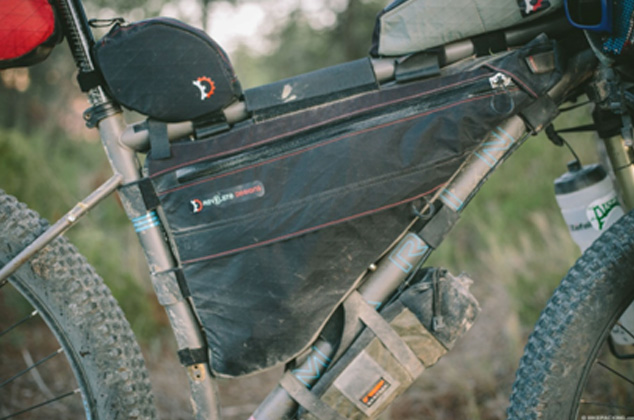
Saddle Bag
A saddle bag comes in a variety of shapes and sizes. Strapped to the saddle and the seat post, saddle bags are designed to possess larger volumes than any other piece of gear.
Ranging from smaller 5 litres bags to 20 litres bags, saddle bags are either conical or missile shaped in order to reduce any wind resistance. Generally considered a lighter option than a pannier rack setup, a large enough saddle bag is one the best investments an adventure cyclist can make.
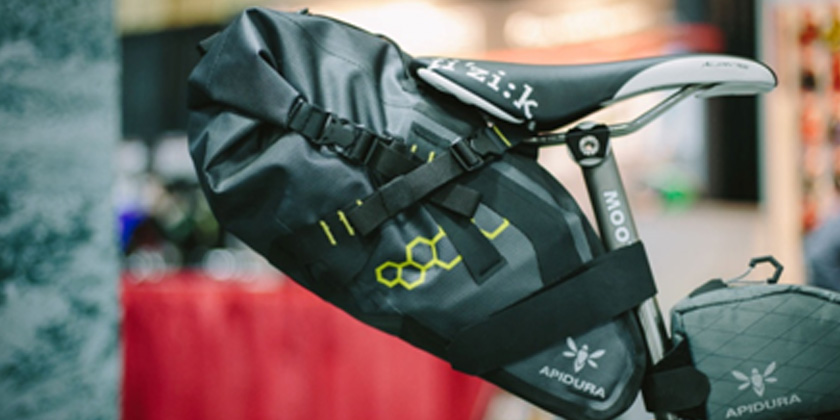
Pannier bags
Pannier bags typically come in pairs and are installed on metal pannier racks either on the fork or on the rear chainstays of the touring bike. The most common kind are rear panniers, sitting either side of the back wheel. One or two of these pannier bags usually suffice for commuting or lightweight touring. Pannier bags are really helpful in weight distribution and ensuring maximum packing capacity. If your touring bike comes with pre-installed or pre-drilled holes for installation of pannier racks, it is of paramount importance to take
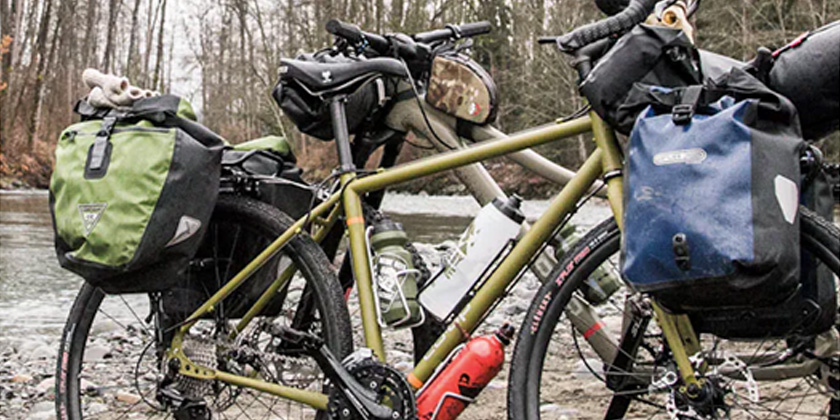
advantage of them and hook up some pannier bags for your touring adventure. In the cycle touring world, pannier bags are considered to be the most robust and spacious bags to carry large equipment and gear, for example even a laptop.
Handlebar bag
A rule of thumb when installing a handlebar bag is to keep the weight minimal at the front, otherwise the bike’s handling will suffer. A touring cyclist will often strap a bivvy bag or a sleeping bag on the handlebar provided the handlebars are wide enough, which they mostly are on touring bikes.
- Apparel
After you’ve purchased a bicycle, it is important that when packing for a cycling tour, to bring comfortable and practical clothing that will keep you cool, dry and safe on the road. Purchasing a good pair of moisture wicking cycling apparel from jerseys to shorts or even tights will keep you comfortable and cool on your long rides. Current trends in cycling apparel include moisture wicking fabrics that drive away odour and keep you fresh on and off the saddle.
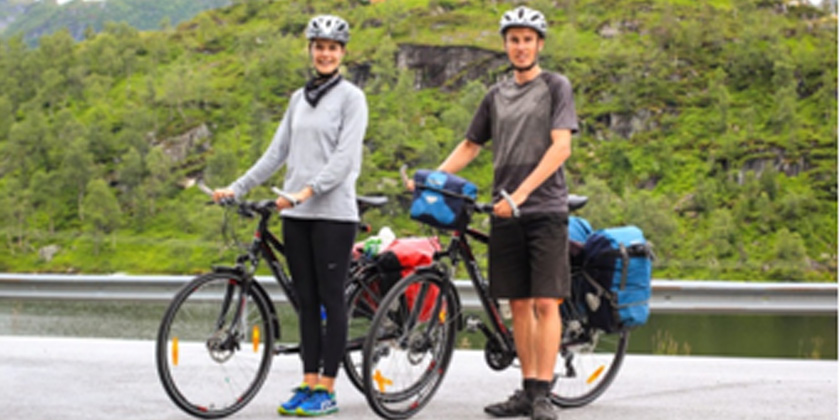
Investing in a good pair of cycling shorts (for any cyclist) that are not only tights but most importantly padded will prevent any chafing and saddle sores on your touring rides.
Keep aside a good budget to buy a light pair of cycling gloves, a sturdy and highly rated helmet (never compromise on head safety!).
Last but not the least, carry apparel for the weather you’ll be riding in. Cycling in India can take you on a multitude of weather changes, so it’s better to pack in some rain gear and winter riding apparel.
Cycling in India can surely be a very challenging task. With the advent of cycling as a sport and mode of transport, there is now no dearth of touring bicycles available in the Indian market. Many companies like Trek, Scott, Riverside (Decathlon) have set up shops to cater to every type of cyclist. Not only are their bicycles super hits, but the additional gear and accessories they offer are of great quality and durability. With plenty of choice, a wide range of features on every bicycle, across various budgets, these brands are stepping up efforts to make every discipline of cycling available to the masses. And now, by making these available to the public at affordable prices, cyclists are now able to venture out into the wild or the countryside to explore India on two wheels.

